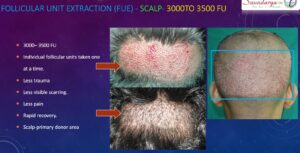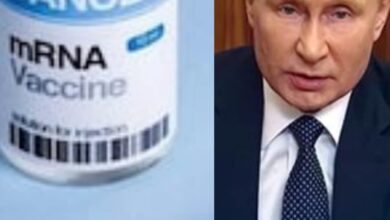HAIR TRANSPLANT PLANS? IS IT SAFE? MUST READ THIS FIRST!
HAIR TRANSPLANT IS SAFEST BUT, GO TO QUALIFIED, EXPERIENCED SURGEONS ONLY ! AN EXPERT OF INTERNATIONAL REPUTE CLEARS MISCONCEPTIONS & HANDS OUT A NOTE OF CAUTION..

Hair Transplant is a great miracle ! Misconceptions hold back many to get benefitted from hair transplant. Indiainput.com spoke to Dr Suresh Chaware, M.S. (General Surgery ) & M.Ch. (Plastic Surgery), with an experience of over two thousand cases, including patients from abroad, in just sixteen years. A brief on everything that one should know about Hair Transplant in simple language. Excerpts :
(By India Input Desk)
Q1:
Hair Transplant surgery related advertisements are everywhere with attractive before & after images. These can be found at public places, in some news periodicals and on local cable tv channels. Your first advice to those wishing to opt for hair transplant surgery.
Quite an easy answer! I would say, stay away from the trap laid by aggressive advertisements. Don’t ever go to unqualified, inexperienced people posing as experts. You must verify the credentials of the surgeon. He must be a Plastic Surgeon or a Dermatology Surgeon with minimum more than three years of experience. It is your fundamental right to know the qualification and expertise of an operating surgeon or treating physician.
Q2:
The problem is a lot of bad publicity and fear mongering. If you ask for advice, chances are any one from the general public will begin throwing stories at you. Stories of other people, real or imagined, involving a lot of pain, itching, difficulty in bathing, failed surgeries or short lived hairs. Then there are talks about possible infections and complications ?

They are mostly hearsay, fictitious or imagined. See, Hair transplant or hair restoration is an evidence based technique. It is scientifically proven backed by the four million cases it helped. If a qualified, experienced surgeon is at the helm, SOP (Standard Operating Procedure) is followed, standard surgery precautions are taken, in proper sterile conditions. Obviously, there is no risk and no complications. Itching is not a big issue but a very minor issue. If the surgery is done properly and by a qualified experienced surgeon, there would be no postoperative infection. We take the patient in confidence, we take the patient’s medical history and background into consideration, then get all sorts of necessary medical tests done, expert opinions checked if needed, before deciding on the course of the action. And, too many painkillers are certainly not needed. Just one pain killer when needed. Another is added only if the patient is too sensitive. And painkillers are used mainly only for initial five to six days. As simple as that !
Q3:
And there are a lot many self-styled people who claim that they ‘know-all’. They talk about possible effects of hair transplant surgery on eyes, brain or kidneys and so on. How much truth and how much fiction here..?
We are talking about a superficial surgery on the scalp, where is any chance of internal organs getting involved here? The SOP is tested, the medications have been used several million times, and have been proven safe.
Q4:
People also tend to think that post surgery, they will not be in a position to step outside the house for a longer period.. affecting their work, livelihood and enjoying better things in life.
There is absolutely no need to indulge in over-thinking and stressful approaches. We mostly begin with complete shaving of the scalp. Once surgery is over, the first ten days are crucial and you are guided for the proper care needed. From the third to sixth day, there is usually edema or swelling on the upper eyelids. That’s it. Nothing as such that prevents you from stepping outdoors. You look normal as before. Growth starts gradually after three months. The pace is slow and nothing that would make you conscious. The hair growth lasts longer and looks natural.
Q5:
What is alopecia or hair loss?
It is average to lose 30-50 strands of hair. If hair loss is above this is considered as hair loss and is time to seek help from a doctor.
Q6:
What type of hair loss?
There are two types of hair loss:
(1) Non pattern Hair loss (Diffused); and
(2) Pattern Hair loss.
Hair loss occurs in particular patterns like Male Pattern Baldness (MPB) and Female Pattern Baldness (FPB). Hair loss may be Scarring (Cicatricial) or Non-Scarring (Non-cicatricial).
Q7:
What is Androgenic alopecia or Pattern hair loss?
More than 90% of hair loss problems in men are AGA. Out of 10 males 6 are suffering from MPB. AGA usually starts at an early age and progresses slowly. Thinning of hair can occur as early as the age of 12 or any time later in life. Most cases start between the age of 15 and 25. The clinical course is gradual. Many men reach their maximum pattern by their forties. Usually there is a strong family history but in about 12% cases family history is negative. The development and occurrence of AGA depends on genetic predisposition and an interaction of endocrine factors.
Q8:
What is hair transplant ?
Hair transplant surgery is basically a redistribution of hairs in one individual. Hair is taken from the hair bearing area (usually from the scalp) that is not affected by the miniaturization process of androgenic alopecia.
Q9:
What is a follicular Unit Hair Transplantation ?
Follicular unit transplantation (FUT) was revolutionary, an advance occurred when surgeons observed that hair grows on scalp in tiny, naturally occurring groupings of 1-3 hairs follicles are called Follicular unit. To get natural looking results of hair transplant, we have to do transplantation in follicular unit manner, Hence this technique basically is known as FUT.
Q.10:
Which anesthesia is used?
Hair transplant is done under local anesthesia.
Q11:
What are methods of Hair Transplantation?
There are two primary techniques of performing Follicular (FUT) hair transplantation:
(1) Traditional STRIPE method FUT; and
(2) The Follicular Unit Extraction.
The major difference between these techniques is the method of donor harvesting, with the rest of the procedure being primarily the same.
Q12:
Please shed some more light on the Post-operative course.
In general, the procedure is very safe with few post-operative problems.
Forehead edema and eyelid occurs in about 20% patients and usually appears on 3rd postoperative day and lasts for 3 more days, which subsides on its own without any complication.
Usually forehead massage and ice fomentation is advised from the day of surgery to be continued for three to four days. Some patients may develop postoperative folliculitis.
Very rare complications are:
(1) Bleeding,
(2) Infection, and
(3) Discomfort in donor area.
All these are minor and easily treatable. In 20% of patients ,there is shedding of transplanted hairs within 6 weeks after surgery. It is known as the shock phase.
Q13:
What is the time frame for the result to show ?
Let’s see the stages.
Transplanted follicles usually shed by about 2 to 6 weeks at which the patient looks like the day before surgery.
They start growing back after 3 months of surgery and after 4 ,visible results are seen. But these hairs are thin and sparse. Between 6 to 8 months , transplanted hairs look like normal hairs. Improvement continues for up to one year.
Q14:
Who is authorized to do hair transplant?
As I told you, only Plastic surgeons and Dermatologists are authorized to do hair transplants. Be aware about technicians and unauthorized people doing hair transplants. Before consenting for hair transplant, the patient must please ensure the surgeon’s qualification.
Q15:
What are the methods of Hair Transplantation?
There are two primary techniques of performing FUT hair transplantation. The major difference between these techniques is the method of donor harvesting, with the rest of the procedure being primarily the same. These techniques are:
(1) Traditional STRIPE method of the Follicular Unit Extraction (FUT); and
(2) Follicular Unit Extraction Method (FUE).
These two are minimal invasive techniques. The main procedural difference between traditional strip (FUT) technique and follicular Unit Extraction Method (FUE) technique is the way the graft is extracted or obtained from the donor area. In FUE, each FU graft is harvested individually with a small micro-punch. In FUE technique, the scarring is minimum , post operative pain is minimum, a 0.8 to 0.9 mm punch is used to make small circular incisions in the skin around the upper part of the follicular unit, which is then extracted (Pulled) directly from the scalp, leaving a tiny hole. This process is repeated till the surgeon has enough grafts to do the procedure. Once they are harvested ,the rest of the procedure (recipient site creation and transplantation of grafts) is essentially the same for both techniques. The difference between these two procedures lies in the appearance of the donor area and the difference in the number and fragility of the grafts produced. Though a linear scar is not created, the thousands of tiny punches can cause visible white dots or moth-eaten look in the donor area in some patients. FUE is sometimes marketed as a non-invasive, scar-less procedure where patients can shave their head, if desired.
The advantages of FUE:
(1) Linear incision is not required hence no linear scar in the donor area. It is usually a preferred technique in patients with a history of hypertrophic scars or keloid tendencies.
(2) It is useful in patients with tight and inflexible scalp or scars from previous surgery.
(3) It is also useful for harvesting body hairs from beards, chest ,limbs and back, pubic and axilla.
Traditional Stripe Method of FUT:
The first step is Donor Harvesting
The goal of donor harvesting is to remove tissue of scalp from the permanent donor area in a way that limits transection of hair follicles. In addition, minimal scar should be minimal and possibly detectable.
A stripe of scalp with about 1-2 cm and length of about 20-25 cm is removed from the permanent donor area. This donor site closure is done with trichophytic closure . It is important to remain within the permanent fringe area when removing the donor strip because if grafts taken from outside this area, those prepared grafts may be lost as time progresses.
 Patients with tight scalp are poor candidates for strip technique.
Patients with tight scalp are poor candidates for strip technique.
The next step is Graft Preparation
The strip harvested donor tissue is converted into grafts in two steps.
When a donor strip is cut into thin slices or slivers containing a single row of follicles, it is known as slivering. This procedure is performed under microscope or magnification. From these slivers, individual units containing 1 to 4 follicles are separated under magnification. These are called grafts. All grafts are stored in a retaining solution, usually Chilled Ringer lactate solution. The temperature is maintained below 4 degrees.
Creating Recipient Sites (Transplantation of hairs):
Recipient site incisions vary in size from 0.65 to 1.2 mm wide, with smaller incisions used for 1to 2 hair FUs and larger incisions are used for the 3-4 hairs FUs or curly hairs. While making slits, the surgeon should create a pattern that imitates nature. The incisions also have to enter the scalp at the same direction and angle as the pre-existing hair follicles.
Placing Grafts:
The skill and ability to place grafts successfully is a critical step in hair transplant surgery. The potential for graft trauma leading to poor growth occurring at this step is high. Fine tipped Jewelers forceps are used for placing grafts in slits. During this procedure loop magnification is essential to avoid injury to the hair follicle.
Post-operative course:
In general, the procedure is very safe with few postoperative problems. Forehead edema and eyelid occurs in about 20% patients and usually appears on 3rd postoperative day and lasts for 3 more days, which subsides on its own without any complication. Usually forehead massage and ice fomentation is advised from the day of surgery to be continued for three to four days. Some patients may develop postoperative folliculitis. Very rare complications are Bleeding, Infection, Discomfort in donor area. All these are minor and easily treatable. In 20% of patients ,there is shedding of transplanted hairs within 6 weeks after surgery is known as shock phase.
The time frame for result:
Transplanted follicles usually shed by about 2 to 6 weeks at which the patient looks like the day before surgery. They start growing back after 3 months of surgery and after 4 months, visible results are seen. But these hairs are thin and sparse. Between 6 to 8 months, transplanted hairs look like normal hairs. Improvement continues for up to one year.
…………….
For more, you may contact :
Website: www.saundaryacity.com
Facebook: saundaryacity
Instagram: saundaryacity
Contact no.: 09324239805 / 08888883246
Phone no.: 0712 2442233.
(all pics: Dr Suresh Chaware, Saundaryacity)




